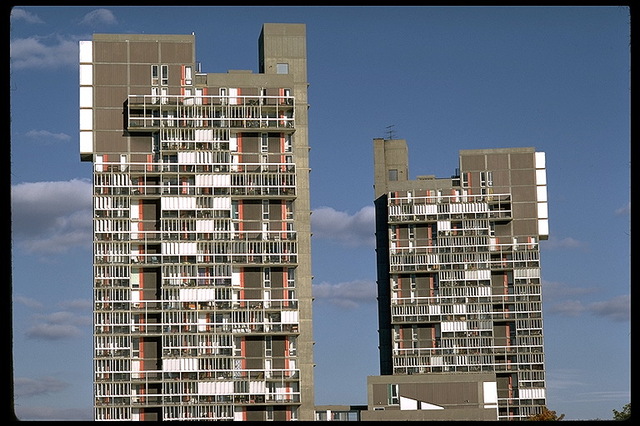Legislating Taste
TJIC has a good example of relying on the government to legislate taste.
More than 30 years after outlawing big flashing signs"¦
Boston wants to bring back some glitz to parts of town deemed too dark
and staid at night.It's a good thing we've got a single monopolistic authority making aesthetic decisions for everyone.
Saying it wants colorful electronic marquees to create an
atmosphere like Times Square in New York, the Boston Redevelopment
Authority is planning to amend the city's zoning code to permit
electronic signs that make "bold use of graphics" and create a sense of
"animation and motion" and "images that engage the public."So, basically, the rationale 30 years ago was "some bureaucrat
finds these tacky, so they're forbidden", and now the rationale is
"some bureaucrat likes these, so they're encouraged".
This from the city of Boston, whose government's sense of aesthetics dropped this butt-ugly eyesore of a city hall into the middle of historic downtown Boston:
And, in case you are one who supports government "redevelopment" and mandates on aesthetics but think that it would all work out fine if architectural experts and committees of academics made the decisions, here is the hideous Peabody Terrace at Harvard University, presumably vetted by the finest architectural academic minds in the country:
These buildings, where Harvard stuck me for a full year, were transported right out of East Berlin, right down to the elevators that only stopped on every third floor for efficiency sake (efficiency of the builder, obviously, not the occupant). The interior walls were bare cast concrete and no amount of heat could warm them in the winter. It was the most depressing place, bar none, I have every lived. But the "experts" loved them, and wished that this vision could have been forced by urban planners on all of America:
Leland Cott, an adjunct professor of
urban design at the [Harvard] GSD, calls Peabody Terrace 'a model of design
efficiency, economy, and attention to scale.'
Fortunately, someone gets it:
The magazine Architecture Boston has focused attention on the
controversial aspects of Sert's work by devoting its July/August 2003
issue to an examination of Peabody Terrace, expressing the essential
disagreement about the work in the form of a stark conundrum:
"Architects love Peabody Terrace. The public hates it."In fact, the public's hostility to the structures may be in
proportion to its degree of proximity, with the most intense feelings
confined to those households on the front lines of the town/gown divide....Otile McManus, in a companion essay, discusses the reactions of many
Cambridge residents, who have described the complex as "monstrous,"
"cold," "uninviting," "overwhelming," and "hostile," and have compared
it to Soviet housing.
Actually, the most intense feeling were by those who lived there, who really, really hated it (though I will admit there were several third world students who loved it -- must have been nostalgic for them). The article goes on to accuse detractors of being anti-modernist. Which is a laugh, since my house is one of the most starkly modern in the area, so modern I could not sell it several years ago. I am not anti-modern. I am anti-bad-design.
Wow! I am kindof amazed at the hostility I still feel fifteen years after the fact. I had started out just to link TJIC's post, and here I am in full-blown rant mode. Sorry.


The Peabody Terrace reminds me of the "crack stacks" in Minneapolis:
http://en.wikipedia.org/wiki/Riverside_Plaza
The lawyers for the Cartoon Network should be thrilled to learn that Boston wants illuminated animated advertising signs.
Don't forget it was Boston that completely shut down when Cartoon Network put up flashing signs of cartoon characters to promote their Aqua Teen Hunger Force show on Adult Swim. The city thought it was some sort of insidious terrorist plot, and the whole incident ultimately resulted in the resignation of Cartoon Network's CEO.
Those aren't buildings, those are cries for help.
I cannot be the only one who read this post, saw the pictures of Peabody Terrace and thought IMMEDIATELY of the book "The Fountainhead" by Ayn Rand. There, brought to real life, are the government planned monstrosities that Ms. Rand warned about years ago. (No, not the ones that Roark designed. )
One thing (of many) that she got right in her fiction was an good sense of prediction - very eerie these days, it seems to me.
And in turn, that was an absolutely horrible book. Being an architecture student I really couldn't stand reading it - she talks about architecture and it's quite obvious she knows nothing about it. That book is really about philosophy
Also, Peabody Terrace was not designed by government...what are you talking about?